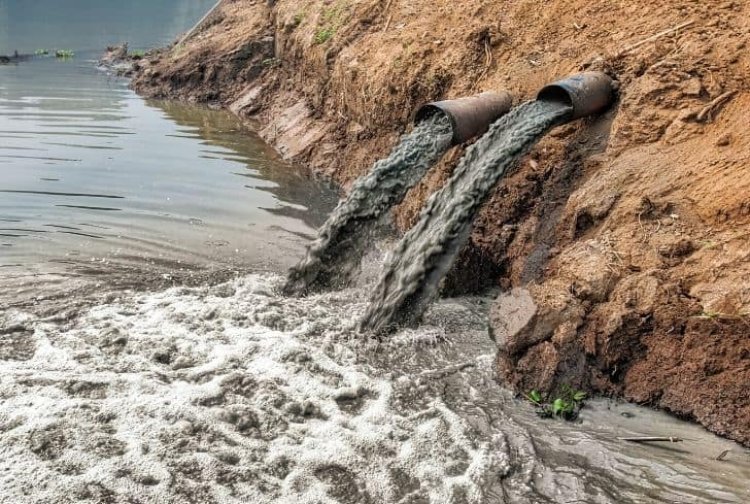Wastewater Conditions in Pakistan
The 2017 UN World Water Report reports that 16% of industrial, 8% of municipal, and 3% of agricultural wastewater is released globally.

Used water or wastewater comes from businesses including textile, agricultural, dying, paint, chemical, and others. Wastewater comes from home, sewage, and industrial sources. About 80% of wastewater worldwide is likely untreated.
The 2017 UN World Water Report found that 16% of industrial, 8% of municipal, and 3% of agricultural wastewater is released globally.
Water demands have increased dramatically in recent years, and as the population grows exponentially, wastewater will also rise.
Untreated wastewater released into oceans and seas will promote hypoxia, or low water oxygen, which will harm aquatic life.
There is growing concern about treating wastewater, but in Asia and the Pacific, 80% to 90% of wastewater is produced and released untreated, polluting groundwater, surface water, and other water resources.
Pakistan, previously water-rich, is now water-poor. The water amount dropped to 1100 m3 per capita in 2006 and is expected to drop to 700 by 2025. Wastewater from various sources is directly discharged into natural sewers, septic tanks, or neighboring waterways in Pakistan.
Cities with proper wastewater treatment have little wastewater before disposal. Lahore produces 12.5% of wastewater annually, of which only 0.01% is treated. The remainder is dumped directly into Karachi (26.3%), Faisalabad (5.6%), Hyderabad (2.2%), and Peshawar (2.3%).
Produce wastewater annually, yet only 15.9%, 25.6%, 34%, and 36% are treated before discharge.
Other cities like Gujranwala, Sialkot, Multan, and Rawalpindi don't follow wastewater treatment processes and dump their water directly into lakes, streams, and rivers, degrading the aquatic ecosystem.
Total wastewater flow into main rivers is 392,511 million gallons, including 316,740 million municipal and 75,771 million industrial effluents.
The Dairy Industry
Pakistan will be the 5th most populated nation in 2020 with 222,540,111 people, or 2.83% of the world's total. Despite declining GDP, the milk sector and other key dairy production systems remain vital to the economy.
Pakistan produces 4th-most dairy products. Approximately 47297 thousand tonnes of milk were produced in 2019, up 3%. Milk production uses water at several stages.
During vehicle or tanker washing, floor cleaning, equipment cleaning, or milk evaporation, the dairy sector discharges 1452.95 to 7925.16 gallons of effluent each day.
The Textile Industry
Pakistan's textile industry, the largest in the industrial sector, accounts for 7.4% of GDP. Pakistan exports the 8th most textiles in Asia.
Textile effluent contains several toxic compounds and heavy metals. Textile wastewater contains copper, zinc, and manganese, which are essential elements. Textile manufacturing processes release 1,441,167 m3 of effluent daily.
Pulp and Paper Industries
About 100 paper and pulp facilities employ wheat straw and bagasse as primary materials. Wastewater from the paper and pulp industry is estimated at 205.6 m3/tonne.
Agricultural Industry
The “backbone” of Pakistan's economy is agriculture. It adds 18.9% to Pakistan's GDP. Wheat, cotton, sugar cane, rice, fruits, and vegetables are Pakistan's principal crops.
Pakistan produces the fifth, fourth, and sixth most wheat, cotton, and sugar worldwide. Pakistan's agriculture industry discharges 16% of wastewater annually, according to a report. Much wastewater is utilized for agriculture irrigation without treatment.
The Auto Industry
With 2.8% of Pakistan's GDP, the automobile industry is also important. A nation with almost 3200 auto facilities produces nearly 200,000 cars and 1.8 million motorcycles. One plant produces almost 2.1 m3/hour of effluent, but it will be reused.
Solution Suggestions:
Physical Treatment
Physical methods purify wastewater at this step. Screening, sedimentation, and skimming remove solids. This method uses no chemicals.
Another great physical water treatment method is aeration. Air is circulated through the water to oxygenate it.
Filtration removes all contaminants. Specific filters can extract contaminants and insoluble particles from wastewater.
Biological Treatment
This degrades soap, human waste, oils, and food in wastewater using biological processes. In biological treatment, microorganisms degrade wastewater organics.
Chemical Treatment
This water treatment uses chemicals. Oxidizing chemicals like chlorine are used to kill water-degrading microbes by adding poisons. Another wastewater oxidizer is ozone. Water is neutralized by adding an acid or base to return it to pH 7. Chemicals keep pathogens out of water, making it pure.


 khushboo_ghori
khushboo_ghori 





